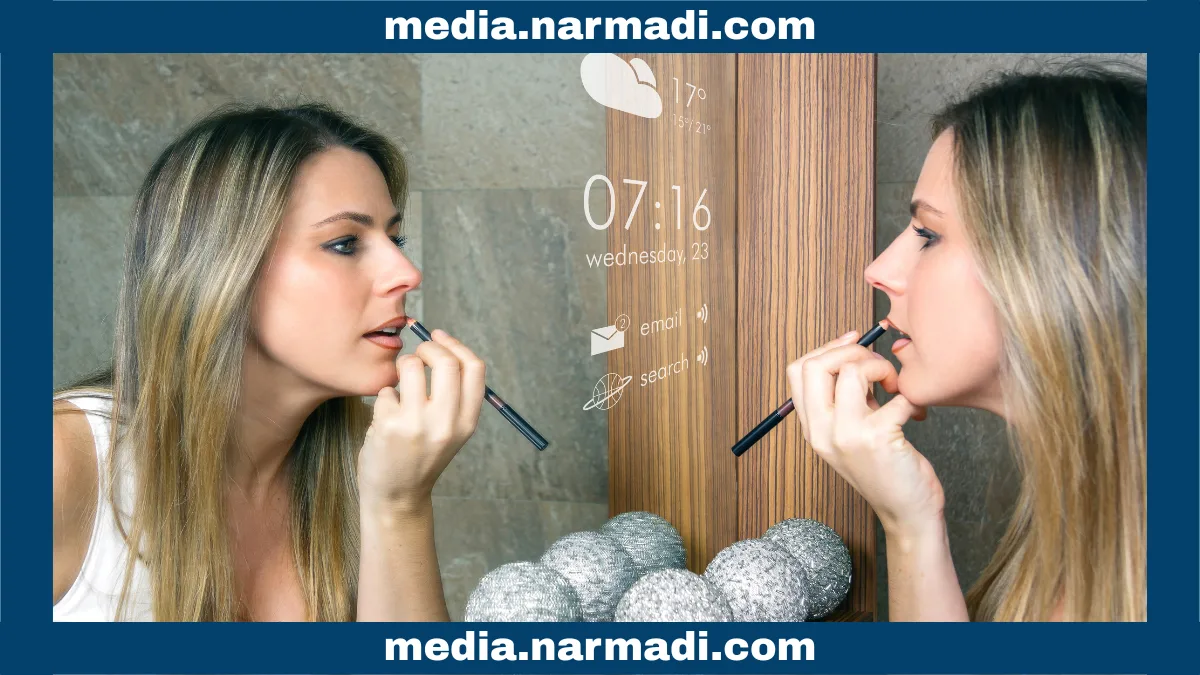The development of smart devices to improve the smart home ecosystem with greater automation is on the rise. One device that supports this ecosystem is the smart mirror.
Are you familiar with this device? Smart mirrors support the smart home ecosystem by replacing the traditional function of a mirror. This smart device not only allows you to look in the mirror while reading the news, checking the weather forecast, and playing your favorite songs.
The presence of smart mirrors certainly provides a new experience in daily activities. To learn more about this smart device, let's discuss it together, starting from its definition, how it works, supporting components, functions, and regulations for its use.
What is a Smart Mirror?

A smart mirror is a smart device that supports the smart home ecosystem. Its presence combines the traditional function of a mirror with digital technology. This smart device is equipped with a digital screen and an Android-based operating system. In other words, this device is a combination of reflective glass and a mini computer.
Not only does it function as a mirror, but this device that supports the smart home ecosystem also provides a comfortable and efficient experience. While looking in the mirror, you can check the time, calendar, and read the news. You can even listen to your favorite music while getting ready and putting on makeup in front of the mirror.
How Does Smart Mirror Work?

A smart mirror works by combining several components that support its function as a reflective glass with an operating system. The following are the components that support its operation:
- Two-way mirror: The glass allows light to be reflected and light from the screen behind it to be transmitted.
- Digital screen: The screen displays information in the form of widgets behind the two-way glass.
- Computer device: This powers the screen and runs applications.
With these components, smart mirrors can display information such as the time, weather, or schedule while you look in the mirror. The glass uses Bluetooth and WiFi connectivity to connect to other smart devices. Some devices support voice commands, making it easier to interact with larger smart home automations.
The Functions of Smart Mirror

Smart mirrors have several functions, including displaying information in real time, providing entertainment, and integrating with smart home systems. Here are some of its functions in detail:
- Displaying information in real-time
The LCD screen of the OLED smart mirror can display information related to weather, time, calendar, news, and email notifications. This information will appear directly on the mirror surface.
- Increasing productivity
With this smart device, getting ready in front of the mirror can be more productive. You can continue doing other activities, such as checking your schedule and opening email notifications, without having to open another device.
- Providing entertainment
Activities in front of the mirror will not be boring, as the smart mirror can provide entertainment for you. Mixing and matching clothes or applying makeup while playing music, videos, or podcasts directly from the mirror will certainly be very enjoyable.
- Improving health and fitness
Some models of these devices can be used as virtual fitness tools via their internal cameras. These smart devices are also specially designed for fitness, featuring workout guides, body sensors, and health data.
- Smart home integration
Smart mirrors are part of the smart home ecosystem that can connect to other smart devices in the home. This capability allows you to control lights, air conditioning, or other household Internet of Things (IoT) devices.
Smart Mirror Regulation

Smart mirrors use technologies such as Bluetooth and WiFi, which operate within a specific frequency spectrum. In every country, all Bluetooth and WiFi-based wireless devices are required to have Radio Frequency (RF) Certification.
Smart mirror regulations require all radio frequency-based devices to meet certain technical standards before they can be sold in that country. This certification ensures that the product complies with government safety and quality regulations and does not interfere with other communication devices.
The certification process involves technical testing, such as frequency adjustment, safety checks, and compatibility with the surrounding environment. Once testing is complete, products that pass will be listed in a Test Report, confirming that they are safe and ready for sale. This report assures customers that the product meets technical standards and is safe.
For companies wishing to sell smart mirrors, Product Compliance Specialists are available to assist with this process. This service includes preparing technical and legal documents, conducting the necessary testing, ensuring regulatory compliance, helping companies streamline the certification process, and providing consumers with confidence in certified products.